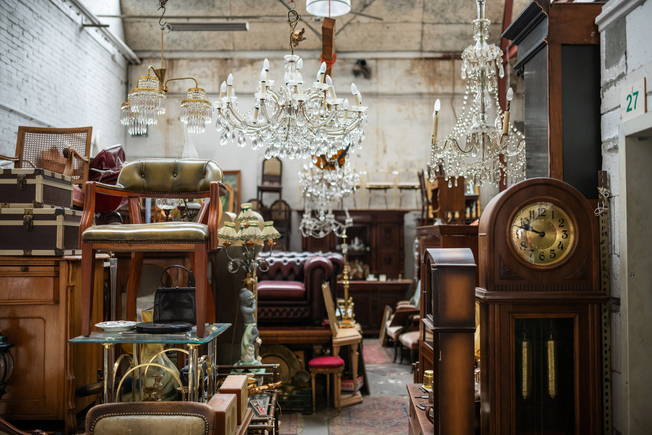
A Room by Room Guide to Packing Efficiently for a Move
Aug 26, 2024
Whether you’re moving a long distance away or within your current neighborhood, you’ll always have to find a way to pack all your belongings when switching to a new home. It’s arguably the biggest challenge we face when moving: How will we ever fit everything we own into the moving truck?
While you can’t avoid the task of packing itself, you can make the prospect of fitting everything in your moving vehicle a bit less daunting with these room-by-room packing tips. Bonus: None of these require fancy packing materials.
In Your Closet
From its long dresses and spare linens to big sweaters and chunky shoes, the closet can feel like a huge obstacle to space-efficient packing. You’ll likely have an easier time packing your closet if you consider some of these tips.
- Especially if it’s been a while, try doing a serious closet clean out before start to pack clothes. After all, you might as well maximize the fresh start you’re getting in your new apartment. Donate clothes you didn’t wear all season, shoes that are broken or uncomfortable, and sweaters that are always a little too itchy to wear out the door.
- Invest in compressing vacuum bags for your bulkier items. This will allow you to flatten multiple sweaters, hoodies, long dresses, and other bulky clothing into a very thin and stackable pallet perfect for your packing boxes. When it comes to moving linens and bedding, vacuum bags are your best bet for saving space.
- Pack matched socks inside your shoes to save space and help your shoes keep their shape. When you put them in boxes, pack them with the laces touching and the heels opposite one another. That way your packing layers can remain level.
In The Kitchen
With fragile items like glass plates, drinkware, and awkward appliances in the mix, it’s even harder to pack efficiently in the kitchen. Getting creative is key.
- Gap filling is key in packing kitchen items into moving boxes. You’ll likely have many one-off items like lemon squeezers, can openers, and whisks, so you might have to set perfect organization to the side. If you see a gap between your chopper and immersion blender, fill it with one of the smaller items like a microplane instead of leaving empty spaces.
- When dealing with fragile items, you can still save space while packing your kitchen. Protect items like glassware with your soft kitchen items like towels, oven mitts, pot holders, tablecloths, napkins, and placemats or chargers. It’s a cheaper and more sustainable alternative to bubble wrap!
- Separate heavy items. Instead of trying to box together heavy items like cast iron pots and pans, blenders, stoneware, and mortar and pestles, use them to anchor individual boxes containing lightweight or fragile items to disperse weight and help all boxes stay put in transit.
- Similar to your closet clean out, you’ll want to do a pantry sweet before you move. Get rid of any expired spices, canned foods, and dry goods before you pack them away. When it comes to perishable food in your fridge, be realistic about what you will cook with when you start unpacking in your new apartment. If you don’t see yourself using it before it goes bad, give it away or donate it to a food bank.
In the Bathroom
Since there are fewer items on average in the bathroom compared to other rooms, it presents an opportunity to save a significant amount of space. Here are ways you can seize that opportunity.
- Be strategic before moving day. Check the expiration dates on all your products, donate items you no longer use, and finally give away those expensive skincare items you ended up having bad reactions to. Chances are, you won’t miss them and moving gives you the perfect opportunity to declutter.
- Give special care to fragile items like perfumes and other objects in glass bottles. Roll them up inside your towels, using them as cushioning to keep breakables safe and consolidate your packing.
- Get comfortable with consolidating boxes. If you already store your cleaning supplies, toiletries, or cosmetics in baskets, see if you can separate the items with a flat layer (a towel, a piece of cardboard, etc) as a divider to help consolidate. You can separate the items back into their respective bins and baskets when you move into your new place. If you’re worried about organization, try to keep similar items together and label boxes with lots of detail as you go about the packing process.
In the Living Room
As the place where many of your largest items live, like couches and coffee tables, the living room is a known enemy to space saving. But there are some loopholes, as well as space-saving opportunities, with softer furnishings.
- Given their bulkiness and large surface area, sometimes it’s best to disassemble your furniture before packing it. Especially if you don’t mind putting things back together, it can be worth it to take apart things like coffee tables, side tables, book shelves, and other applicable items.
- Don’t overlook items that can double as storage receptacles. Ottomans, benches, and baskets, for example, make great places for any items that don’t have a clear place in your boxes. Remember, there are no rules in packing, and you can use that to your advantage; don’t be afraid to combine items from different rooms.
- Be smart with soft items. Instead of packing your folded blankets and pillows in cardboard boxes, use them to pad and protect fragile items like TVs and electronics, picture frames, mirrors, and pottery.
For a more detailed guide on how to pack books or pack plants for a move, check out our full guides. For a list of packing supplies that you may need for your move if DIY solutions aren’t cutting it, read our full guide here.
As you can see, there are common threads for space saving in each room — you can always vacuum pack soft items or use them to protect fragile items. And when it comes to using boxes, pack every last square inch of every box with something or you’ll end up with more half-full boxes than you need. Your boxes may end up being heavier, but at least you won’t have to make multiple trips or buy more cargo space last minute during the moving process. Happy moving!
Top cities
Atlanta Apartments
1,614 apartments starting at $700/month
Austin Apartments
5,154 apartments starting at $500/month
Baltimore Apartments
1,334 apartments starting at $475/month
Boston Apartments
5,611 apartments starting at $1,050/month
Charlotte Apartments
2,893 apartments starting at $560/month
Chicago Apartments
6,482 apartments starting at $638/month
Dallas Apartments
5,529 apartments starting at $595/month
Fort Worth Apartments
2,715 apartments starting at $500/month
Houston Apartments
5,518 apartments starting at $599/month
Las Vegas Apartments
1,100 apartments starting at $650/month
Los Angeles Apartments
11,045 apartments starting at $430/month
Miami Apartments
478 apartments starting at $1,200/month
Milwaukee Apartments
1,189 apartments starting at $595/month
New York Apartments
5,187 apartments starting at $1,000/month
Oakland Apartments
765 apartments starting at $750/month
Orlando Apartments
853 apartments starting at $940/month
Philadelphia Apartments
3,132 apartments starting at $500/month
Phoenix Apartments
4,250 apartments starting at $600/month
Pittsburgh Apartments
793 apartments starting at $450/month
Portland Apartments
2,158 apartments starting at $750/month
Raleigh Apartments
1,272 apartments starting at $550/month
San Antonio Apartments
3,604 apartments starting at $574/month
San Diego Apartments
2,817 apartments starting at $650/month
San Francisco Apartments
486 apartments starting at $830/month
San Jose Apartments
408 apartments starting at $1,100/month
Seattle Apartments
3,288 apartments starting at $650/month
Tampa Apartments
813 apartments starting at $812/month
Washington DC Apartments
2,283 apartments starting at $899/month


